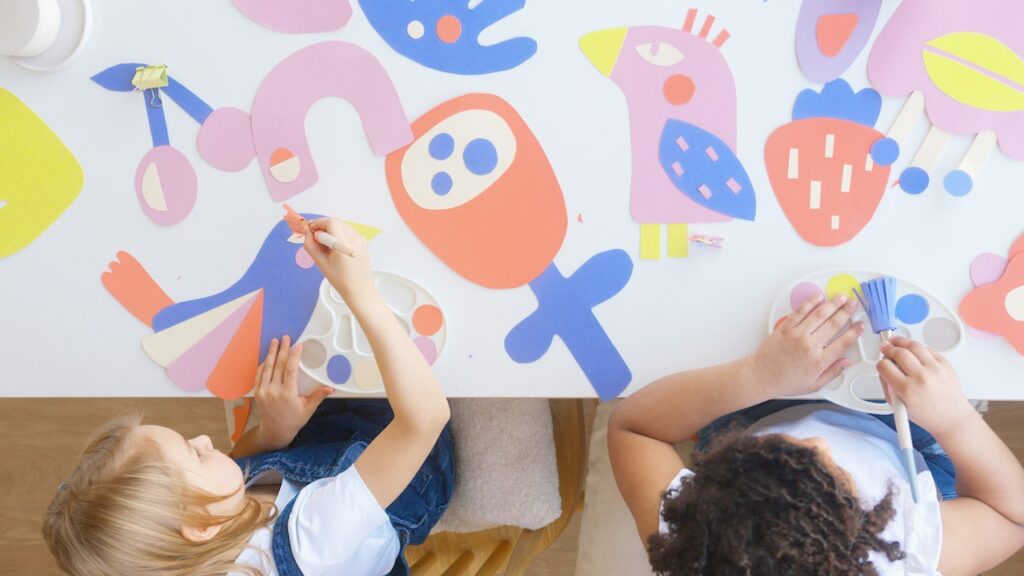Table of Contents
Art and craft paint is a versatile medium that opens up a world of creativity and self-expression. Whether you’re an experienced artist or a beginner looking to explore new artistic horizons, mastering different paint techniques can bring your artistic vision to life. We will delve into various art and craft paint techniques that will inspire you to create stunning works of art. Prepare yourself to release your creativity and engage in the art of crafting with a vibrant array of colors!
Acrylic Pouring
Acrylic pouring is a mesmerizing technique that involves pouring fluid acrylic paint onto a canvas or other surfaces. By tilting and manipulating the canvas, you can create beautiful abstract patterns and vibrant color combinations. Experiment with different pouring mediums, such as silicone oil or pouring mediums with various viscosities, to achieve unique effects.
Watercolor Wash
Watercolor painting is known for its translucent and ethereal qualities. Create a watercolor wash by diluting watercolor paint with water and applying it to paper. This technique allows the colors to blend and flow, producing beautiful gradients and soft, dreamy effects.
Impasto Texture
Impasto is a technique that involves applying thick layers of paint onto a surface to create texture and dimension. Use a palette knife or a brush to apply the paint with bold, visible strokes. This technique is particularly effective with heavy-bodied paints like acrylics or oil paints.
Stippling
Stippling involves creating patterns or textures by using small, distinct dots or marks. This technique can be done with brushes, sponges, or even unconventional tools like cotton swabs or the end of a paintbrush. Experiment with different sizes and densities of dots to achieve various textures and visual effects.
Dry Brushing
Dry brushing is a technique that involves applying a small amount of paint onto a brush and then removing most of the paint by wiping it off with a paper towel or cloth. The brush is then lightly dragged across the surface, creating a textured, feathery effect. This technique is great for adding highlights, texture, or a weathered look to your artwork.

Sgraffito
Sgraffito is a technique that involves scratching or scraping into a layer of wet or dry paint to reveal underlying colors or create intricate designs. Use a palette knife, a toothpick, or other fine-pointed tools to scratch into the paint layers, adding depth and detail to your artwork.
Splatter and Drip
For a fun and dynamic effect, try splattering or dripping paint onto your artwork. Dip a brush or toothbrush into the paint and flick it onto the canvas to create splatter patterns. Alternatively, pour or drip paint from a higher point to achieve controlled or random drips that add movement and interest to your piece.
Wet-on-Wet
In the wet-on-wet technique, the process entails applying paint onto a surface that is already moist with fresh layers of wet paint. This method allows colors to blend seamlessly and creates soft transitions and gradients. It’s particularly effective with watercolors or acrylics. Experiment with different brush sizes, blending techniques, and color combinations to achieve desired effects.
Resist Technique
Resist techniques involve creating areas of resistance to paint, allowing certain parts of the surface to remain untouched or reveal underlying layers. Masking fluid, wax crayons, or rubber cement can be used to create these resist areas. Apply paint over the surface, and once dry, remove the resist material to reveal the hidden patterns or colors.
Monoprinting
Monoprinting is a versatile art and craft paint technique that produces unique, one-of-a-kind prints. Apply a layer of paint onto a smooth surface like glass or a gelli plate, and then transfer the paint onto paper by pressing it against the surface. You can experiment with different textures, layering techniques, and stencils to create captivating prints.
Collage and Mixed Media art and craft paint
Combine art and craft paint with other materials to create mixed-media artwork. Incorporate elements like paper, fabric, found objects, or photographs into your paintings. Layering different materials and textures adds depth and visual interest to your artwork.
Glazing
Glazing involves layering transparent or translucent paint over dry layers of art and craft paint. This technique allows you to build up colors, add depth, and create luminosity. Apply thin layers of glaze, allowing each layer to dry before adding the next, to achieve the desired effect.
Reverse Painting
Reverse painting involves applying paint on the reverse side of a transparent or translucent surface, such as glass or acetate. This technique allows you to create a unique visual effect as the paint is seen through the material. Experiment with different subjects and layering techniques to achieve stunning reverse paintings.
Sponging
Sponging involves using a sponge to apply paint onto a surface, creating texture and soft transitions. Dip a sponge into the art and craft paint and lightly dab or pat it onto the surface. This technique works well for creating foliage, clouds, or textured backgrounds.
Conclusion
Art and craft painting techniques offer endless possibilities for creative expression. Whether you’re working with acrylics, watercolors, or other types of paint, exploring these techniques can add depth, texture, and visual interest to your artwork. Remember to experiment, embrace spontaneity, and let your creativity guide you as you craft with colors. So grab your brushes, mix your paints, art and craft paint, and embark on a colorful journey of artistic exploration. Let your imagination soar and create masterpieces that truly reflect your unique artistic style.


